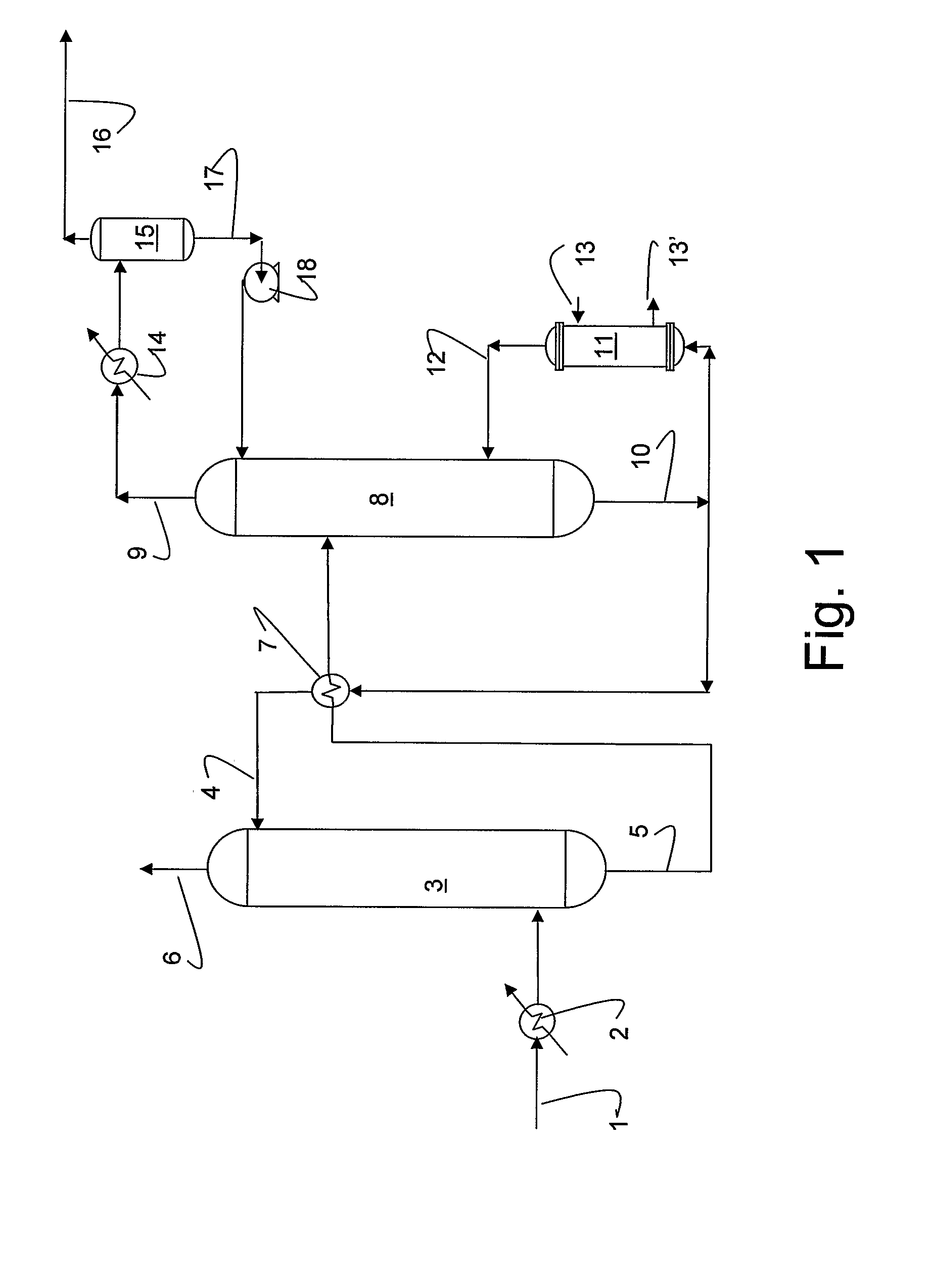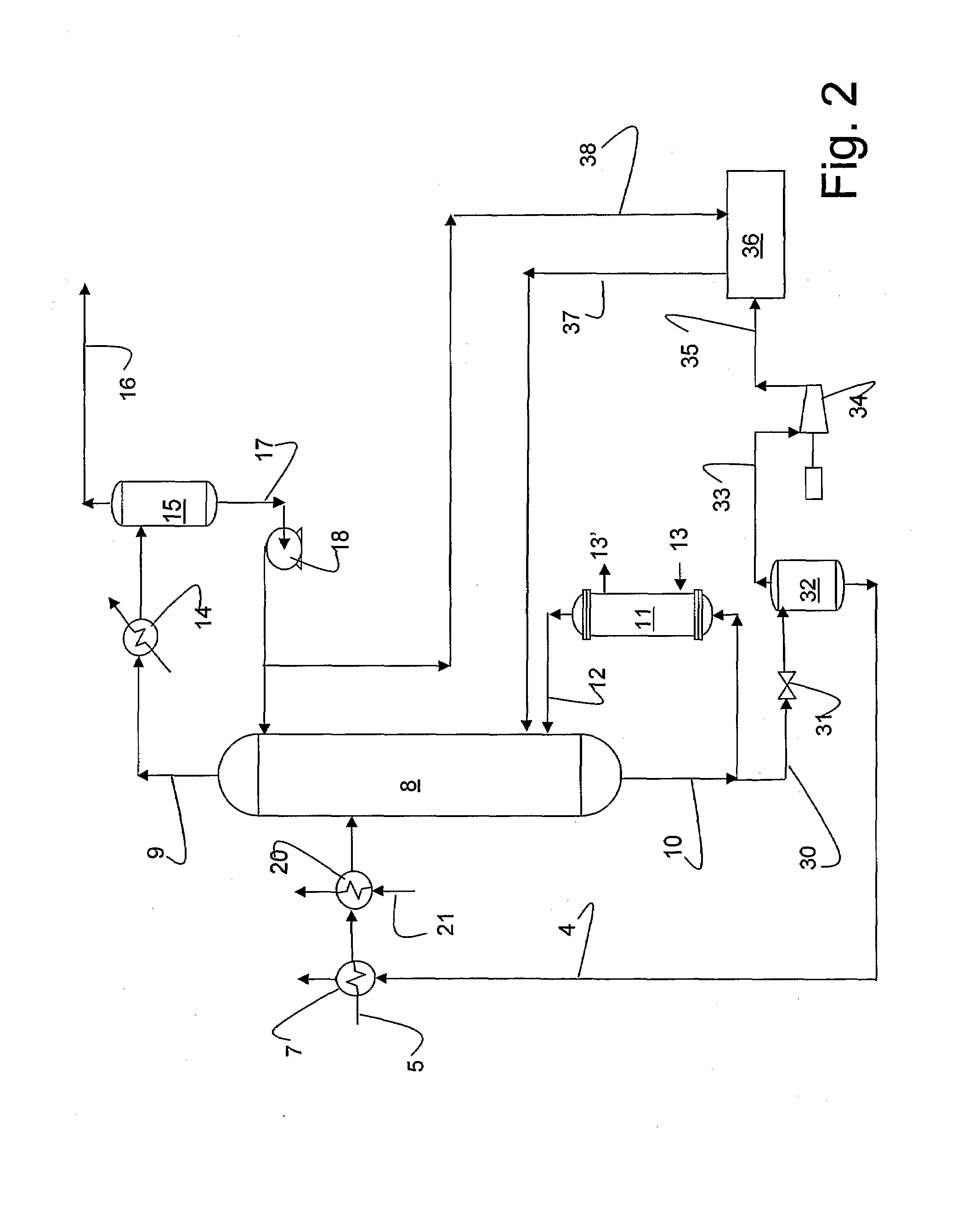Absorbent regeneration with flashed lean solution and heat integration
a technology of absorbent regeneration and flashed lean solution, which is applied in the field of co2 capture from a gas mixture, can solve the problems of reduced efficiency compared with a traditional plant, reduced efficiency, and less profit for facilities, and achieves the effect of reducing the duty of reboilers and reducing the demand
- Summary
- Abstract
- Description
- Claims
- Application Information
AI Technical Summary
Benefits of technology
Problems solved by technology
Method used
Image
Examples
Embodiment Construction
[0038]FIG. 1 illustrates a CO2 capturing plant according to the prior art, where exhaust gas from combustion of carbonaceous fuel enters the CO2 capturing plant through an exhaust line 1. The exhaust gas in line 1 is substantially cooled by utilization of the high temperature heat energy from the combustion for production of electrical energy. The temperature of the exhaust entering the CO2 capturing plant through line is normally from about 120° C. to about 90° C. The exhaust gas from line 1 is optionally introduced into a cooling section in which it is saturated with water and cooled to a temperature e.g. from about 35° C. to about 60° C.
[0039]The cooled and humidified exhaust gas is then introduced into the lower part of an absorption tower 3 in which the exhaust gas flows from the bottom to the top of the absorption tower 3 countercurrent to a lean absorbent, i.e. absorbent that is stripped for CO2, that is introduced into the upper part of the absorption tower through a lean ab...
PUM
| Property | Measurement | Unit |
|---|---|---|
| inlet temperature | aaaaa | aaaaa |
| temperature | aaaaa | aaaaa |
| temperature | aaaaa | aaaaa |
Abstract
Description
Claims
Application Information
 Login to View More
Login to View More - R&D
- Intellectual Property
- Life Sciences
- Materials
- Tech Scout
- Unparalleled Data Quality
- Higher Quality Content
- 60% Fewer Hallucinations
Browse by: Latest US Patents, China's latest patents, Technical Efficacy Thesaurus, Application Domain, Technology Topic, Popular Technical Reports.
© 2025 PatSnap. All rights reserved.Legal|Privacy policy|Modern Slavery Act Transparency Statement|Sitemap|About US| Contact US: help@patsnap.com



